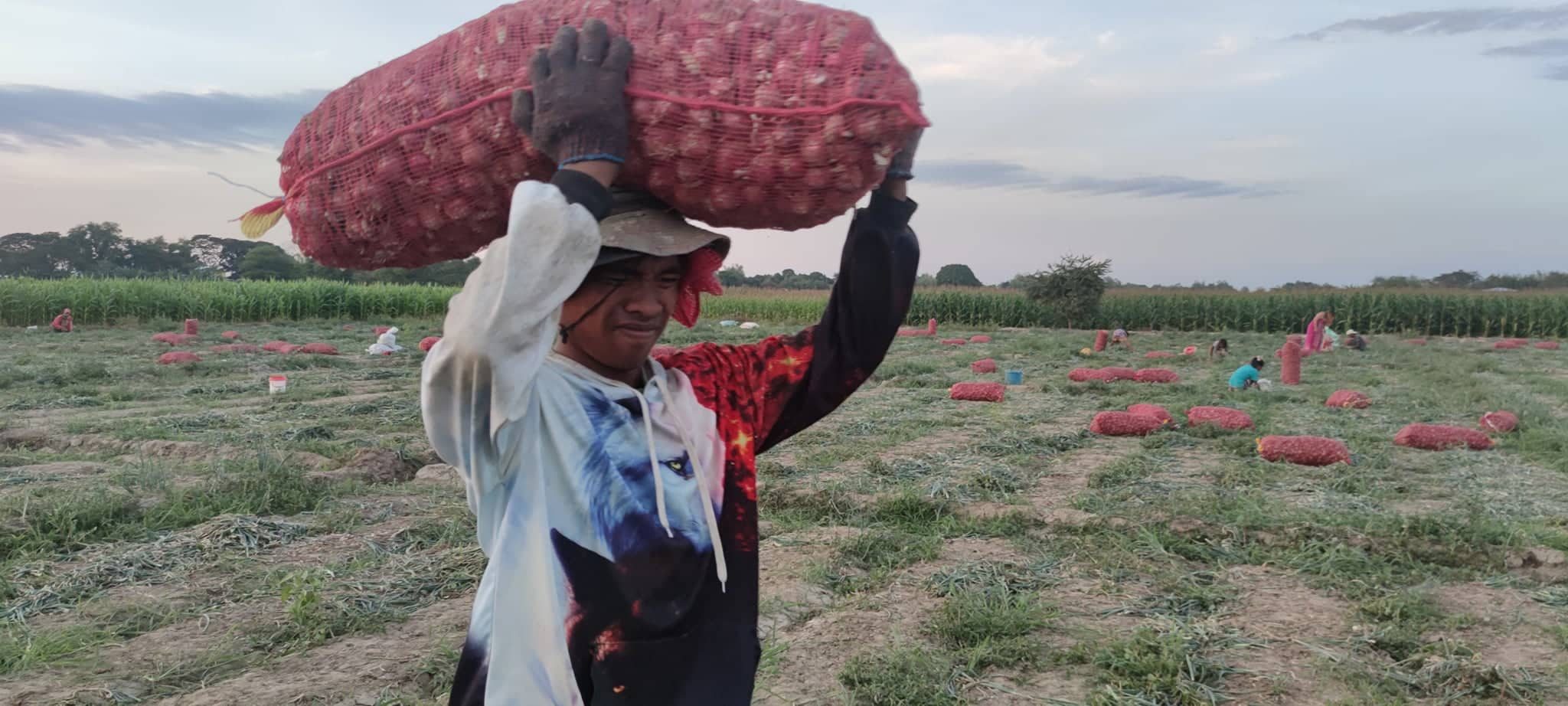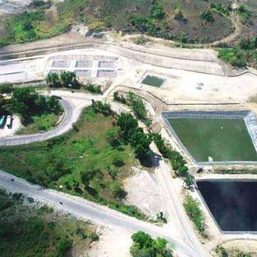SUMMARY
This is AI generated summarization, which may have errors. For context, always refer to the full article.

PANGASINAN, Philippines – People say you need to slice an onion to make someone cry. These days, just looking at the coming harvest can make onion farmers weep in Bayambang town in this province.
The old saying, “Kung gusto mong ‘yumaman, magtanim ka ng sibuyas (If you want to get rich, plant onions),” no longer holds true.
The old formula of high yields plus high farmgate prices could make an onion farmer a millionaire.
But Ronnie Ringor, a 37-year-old farmer from generations of onion farmers in Manambong Parte, Bayambang, thinks that’s now a joke.
In the last two years, pests and fungi pushed down his income. This year, just breaking even is out of reach, the farmer told Rappler on February 13.
With an estimated 2,000 hectares of land dedicated to onion farming, the town of Bayambang is known as the Onion Capital of Ilocos Region.
One of its star varieties, Super Pinoy, is a hit in markets outside the province.
“Bilog siya pero hindi masyadong malaki, kaya maganda ang quality,” said Ringor. (It is round, but not very big, so it is of good quality)
The farmgate price of onions was between P23 to P28 per kilogram on February 16 – fare from the average P40/kilo selling price in Pangasinan markets.
“Si buyer, may presyo, si ahente, nagbabawas din para may kita siya, kaya ganyan ang bentahan,” Ringor told Rappler on February 13. (The trader sets a price, then the agent would further reduce this so he could profit, that’s how it works.)
These hardships slashed the land area dedicated to onions from 1,900 hectares to only 1,503 hectares in 2022, Bayambang Municipal Agriculture Office (MAO) officer-in-charge Zyra Orpiano told Rappler on Thursday, February 17.
Rising input, lower output
Ringor said one hectare planted with onions requires an investment of between P250,000 to P300,000 – the cost of onion seedlings, fertilizer, pesticide, anti-fungal agents, water supply, manpower, and labor.
One reason for his earning loss is the current fertilizer price.
Urea, the common fertilizer, now costs an average of P2,500 to P2,600 per 50-kilo bag. A 30-kilo bag of sulfate, which onion farmers also use, costs the same. Back in 2020, their prices were between a third and half of current tags.
Ringor said one hectare requires from 18 to 20 bags of one specific fertilizer throughout the season. This is on top of other types of fertilizers needed to enrich the soil.
One hectare typically yields around 240 bags, each weighing approximately 30 kilos. A healthy harvest would result in a yield of about 95% to 97%.
To break even, the farmgate price needs to be at least P40/kilo, Ringor pointed out. To profit, the farmgate price should rise to at least P45.
“’Yung P37 to P38, puwede na ‘yon. Palugi na pero kahit papaano kakayanin pa”, said Ringor.
(The [farmgate] price of P37 or P38 is okay. We are selling at a loss, but we could still manage.)
Ringor scratches his head when asked how he would deal with the current farmgate price.
Sensitive onions
Onion farmers have other deadly enemies, like harabas (army worms).
Ringor said if farmers are not vigilant, the harabas could potentially affect a large percentage of the onion fields almost overnight.
At least 1,000 hectares of onion farmlands here were lost to army worms infestation in 2021.
Orpiano, citing MAO records, told Rappler the destruction involved 50% to 70% of onion harvests in 2021. Some barangays in Bayambang are still infested with harabas, the official added.
Ringor thinks it’s a miracle that his farm emerged unscathed from the infestation.
Other enemies include fungal diseases such as blight, mildew, black mold, bacterial bulb rot – all requiring various types of pesticide.
To save money, Ringor is trying to experiment with other methods to maintain the soil’s nutrition, but he’ll need more time to come up with stable mixes.
And then, there’s the weather.
Farmers usually plant onions during the final quarter of the year. The plant hates rain and floods.
In the 2021 harvest, Ringor suffered losses of around P1 million due to rains which persisted until December 2020. He had invested around P700,000.
He is thankful that the last quarter of 2021 did not bring as much rain, or the combination with low farmgate prices would have sent him under.

Hopes and aspirations.
While no longer expecting gains for 2022, Ringor hopes that somehow, until March, his onions could manage to hold on.
The peak season for harvest is from February to March. The farmer plans to hold back on uprooting his crop until the farmgate price increases, even for just a little bit.
“Baka 120 to 130 days, puwede i-hold ito. Antayin muna natin,” he said. (Perhaps I can hold on for 120 to 130. Let’s wait first.)
Still, Ringor told Rappler he is not turning back on onion farming despite all the challenges.
“Kahit ganito, ‘di ako titigil. May pangarap kami. Para sa pamilya,” he said. (Despite this, I will not stop. I have dreams for my family.)
He wants to give his family, particularly his young daughter, a good life. Ringor wants her to become a doctor.
The high risks also come with high rewards on good years, the farmer stressed.
For him, the worst thing is not loss but missing out when onion prices are high.
“Masakit sa loob iyon kapag nagkataon na maganda ang presyo. Maiinggit ka na lang talaga sa iba,” he pointed out. (It will hurt to learn that you have been left out when the price goes high. You’ll just have to watch others with envy.) – Rappler.com
Ahikam Pasion is a Luzon-based journalist and an awardee of the Aries Rufo Journalism Fellowship.
Add a comment
How does this make you feel?









There are no comments yet. Add your comment to start the conversation.